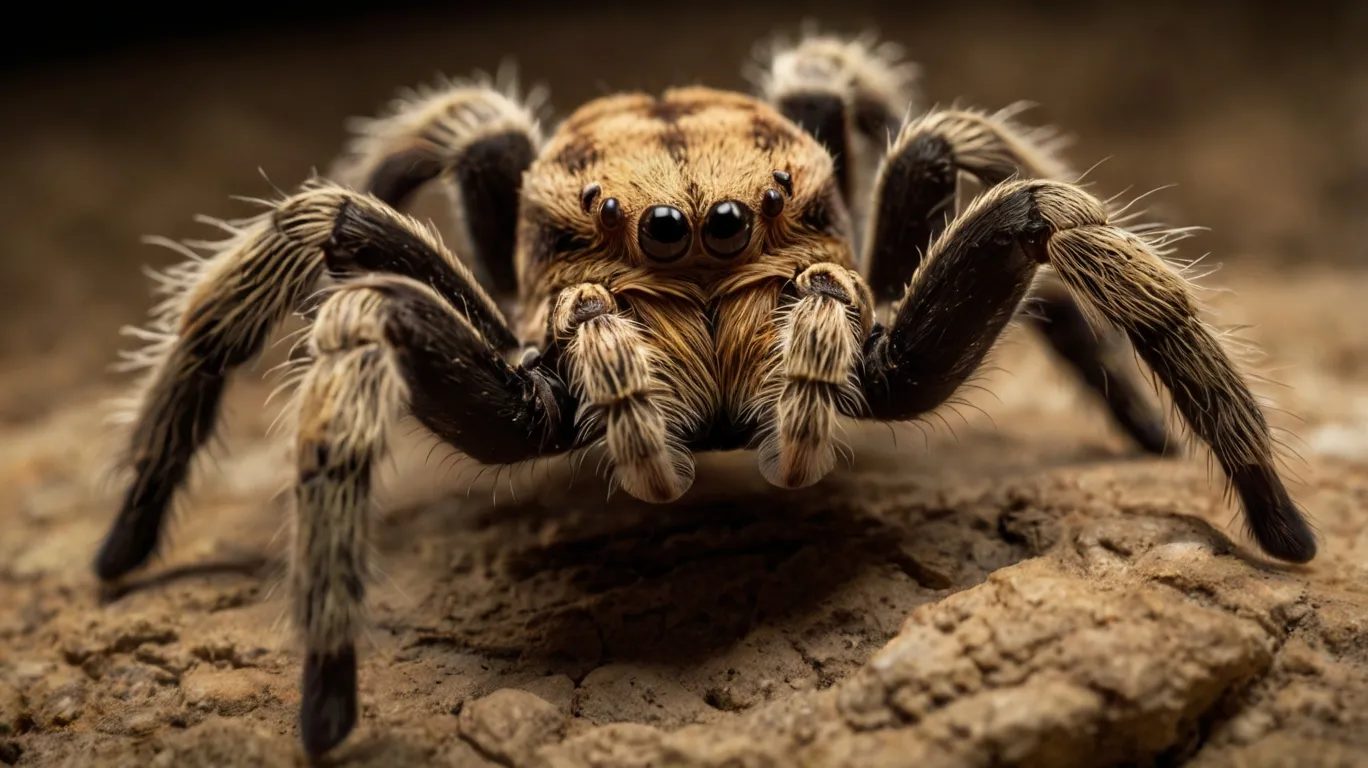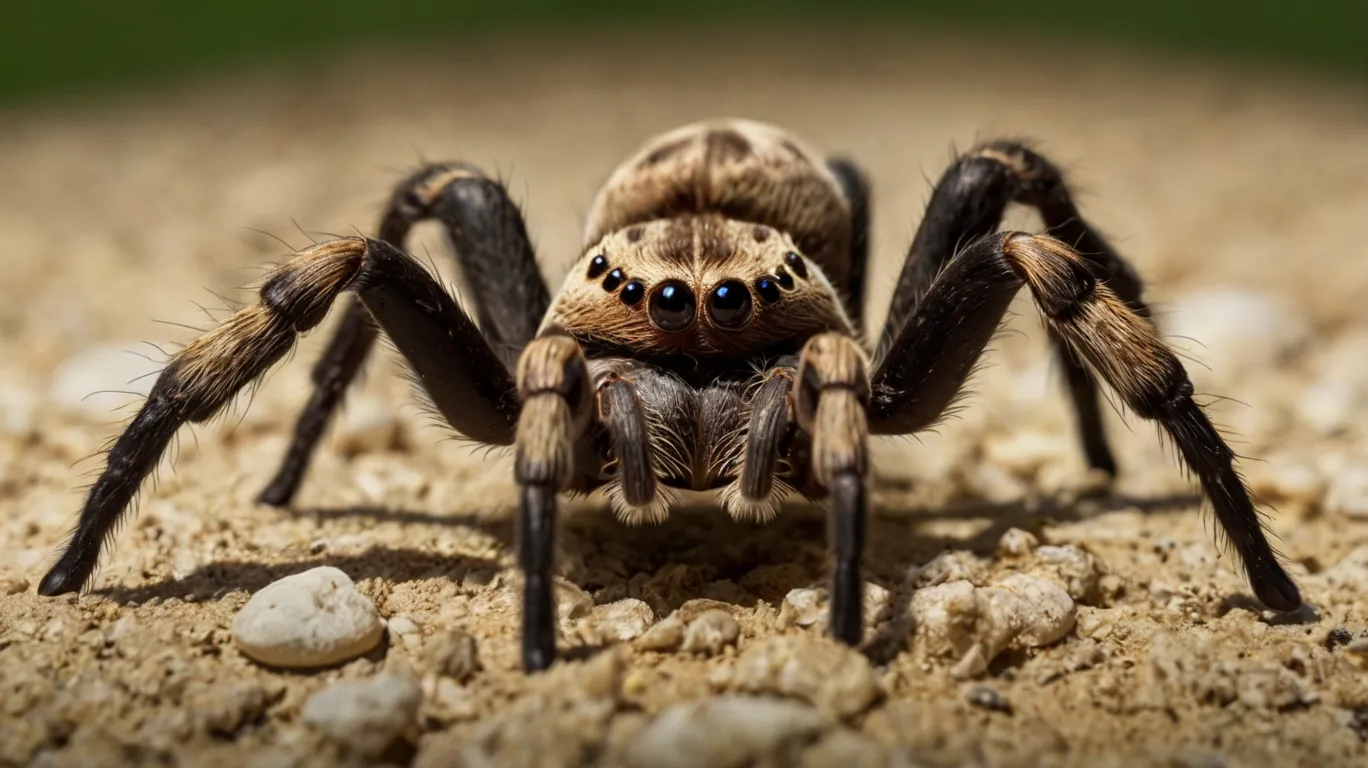Tarantula Medical Information & Health Guide
Understanding Tarantula Health
Tarantulas are generally hardy invertebrates when provided with appropriate husbandry specific to their species (terrestrial, arboreal, fossorial; arid vs. humid). Most health issues arise from improper environment (temperature, humidity), bad molts, dehydration, or injury. Veterinary care for tarantulas is extremely limited and often not feasible. Prevention and quick recognition of problems by the keeper are paramount. This guide offers general information based on common keeper knowledge; it is NOT a substitute for the very specialized veterinary care that may rarely be available or advice from highly experienced keepers.

Common Tarantula Health & Molting Issues
Recognizing these issues is key, as treatment options are often limited.
- Dysecdysis (Bad Molt / Mismolt): Difficulty shedding the exoskeleton. This is one of the most critical phases and common times for problems. Caused by incorrect humidity (usually too low), dehydration, stress, injury, or underlying health issues.
- Symptoms: Tarantula stuck partially in old skin, inability to free limbs or fangs, deformed limbs after molting, becoming trapped and dying.
- Prevention: Provide species-appropriate humidity levels (especially leading up to a molt – often indicated by fasting, darker colors, bald abdomen darkening), ensure constant access to a water dish, minimize disturbances before and during molting. Do NOT assist unless absolutely necessary and know the risks.
- Intervention (Risky): If stuck for many hours (>12-24h) and clearly struggling, *minimal* assistance with a damp Q-tip or fine paintbrush to gently moisten stuck areas *might* be attempted by experienced keepers, but risks injury. Often, intervention causes more harm.
- Dehydration: Lack of sufficient water intake or environmental moisture.
- Symptoms: Lethargy, shriveled or wrinkled abdomen (opisthosoma), unresponsive, legs curled underneath the body (severe sign, often near death).
- Prevention: Always provide a full, clean water dish (size appropriate, pebbles can help prevent drowning for spiderlings). Maintain correct humidity. Lightly mist one side of enclosure for humid species if needed (avoid spraying the T).
- Treatment: Ensure water dish is full and accessible. Place tarantula’s mouthparts (chelicerae) gently near the water’s edge. In severe cases, placing the T in an “ICU” (Intensive Care Unit – a container with damp paper towels, ensuring T doesn’t drown) *might* help revive it through contact moisture, but prognosis is poor if legs are curled.
- Injury (Falls, Punctures): Falls from heights (especially for heavy-bodied terrestrials in tall enclosures) can rupture the abdomen, which is often fatal. Sharp objects can cause punctures. Lost limbs typically regenerate over subsequent molts.
- Symptoms: Visible bleeding (hemolymph leakage – clear, bluish, or yellowish fluid), ruptured abdomen, broken/lost limbs.
- Prevention: Provide appropriately sized enclosures (terrestrials need more floor space than height), ensure secure lid, remove sharp decorations, handle minimally and carefully (close to ground).
- Treatment (Minor Bleeding): Apply cornstarch or corn flour directly to the wound using a Q-tip or paintbrush to help stop minor hemolymph leakage (acts as a coagulant). Keep T in clean, dry conditions. A ruptured abdomen is almost always fatal.
- Parasites (Nematodes, Mites): Nematodes are internal worms, often appearing as white masses around the mouthparts (chelicerae) in advanced stages. Mites can sometimes infest enclosures, though parasitic mites directly harming the T are less common than scavenger mites.
- Symptoms (Nematodes): Lethargy, anorexia, white/creamy discharge or mass around mouthparts, aimless wandering, strange behavior. Often fatal.
- Symptoms (Mites): Visible tiny dots moving on T or in enclosure. Scavenger mites often congregate on old food boluses or waste. Parasitic mites might cluster around joints or book lungs.
- Prevention: Quarantine new Ts, maintain good hygiene (remove old food, waste), use clean substrate, source feeders from clean cultures.
- Treatment: Nematodes are usually untreatable and fatal; isolate T immediately to prevent spread. For mites, identify type if possible. Scavenger mites require thorough cleaning and substrate change. Parasitic mites are harder to treat, may involve predatory mites (Hypoaspis miles) or careful application of specific treatments (vet/expert advice crucial, high risk).
- Fungal Infections: Can occur in overly damp, stagnant conditions, sometimes appearing as discolored patches on the exoskeleton.
- Symptoms: Discolored spots/patches on carapace or abdomen, sometimes fuzzy appearance in extreme cases (often post-mortem).
- Prevention: Ensure proper ventilation, avoid waterlogged substrate, maintain species-appropriate humidity (not constant wetness for most).
- Note: Often difficult to treat. Improving ventilation and ensuring substrate isn’t soaked is key.
- Impaction (Rare): While they liquefy prey, impaction from substrate ingestion is theoretically possible, though uncommon. More likely is a food bolus blockage.
- Symptoms: Abdomen stays large long after feeding, refusal to eat, lethargy.
- Prevention: Use appropriate substrate, ensure good hydration.
- Note: Very difficult to diagnose or treat. Ensure proper husbandry.
- DKS (Dyskinetic Syndrome): Not a specific disease, but a collection of symptoms involving erratic, uncoordinated movements, tremors, inability to climb, falling over. Causes are largely unknown but suspected links include pesticide/chemical exposure, genetics, infection, or other underlying issues.
- Symptoms: Jerky movements, shaking legs, difficulty righting itself, stumbling, twitching.
- Prevention: Avoid all pesticides/chemicals near Ts, ensure clean feeders/substrate, maintain proper husbandry.
- Note: No known cure. Prognosis is typically very poor. Isolate the animal.
Prevention Through Proper Husbandry
Good care tailored to the tarantula’s species is the best defense against health problems.

- Species-Specific Enclosure: Correct size and orientation (terrestrial = longer, arboreal = taller, fossorial = deep substrate). Secure lid is essential.
- Correct Substrate: Coconut fiber, peat moss, vermiculite mixes are common. Depth varies by type (burrowers need deep substrate).
- Temperature & Humidity: Maintain appropriate range for the species. Most do well at room temperature (70-80°F). Humidity needs vary greatly (desert vs. tropical species). Provide cross-ventilation.
- Water Dish: Always provide a shallow, clean water dish appropriate for the T’s size. Overflowing occasionally helps humidity for some species.
- Hides: Provide appropriate hides (cork bark, half logs, starter burrow for fossorials) for security.
- Feeding Schedule: Feed appropriately sized prey (crickets, roaches, worms) on a species and age-dependent schedule (spiderlings eat more often than adults). Remove uneaten live prey after 24 hours. Remove food boluses (remains) promptly.
- Molting Care: Recognize pre-molt signs (fasting, darker color, lethargy, bald spot darkening). Ensure humidity is correct and do NOT disturb the tarantula during this vulnerable time.
- Handling: Minimize handling. If necessary, handle safely close to a soft surface to prevent falls. Be aware of urticating hairs and potential bites.
- Quarantine: Keep new tarantulas separate from established collections for observation (30-60 days).
General Signs of Poor Health in Tarantulas
Subtle changes often indicate problems:
- Legs consistently curled underneath the body (very bad sign)
- Shriveled or wrinkled abdomen
- Lethargy, lack of response to stimuli
- Refusal to eat for extended periods (outside of pre-molt or normal fasting)
- Difficulty molting, getting stuck
- Visible injuries, bleeding (hemolymph)
- White mass/discharge around mouthparts (nematodes)
- Erratic, uncoordinated movements (DKS)
- Visible mites clustering on the tarantula
- Mold/fungus growing on the tarantula (often happens post-mortem but can occur on weak Ts)
Finding Veterinary or Expert Help
Veterinary care for tarantulas is extremely limited and specialized. Experienced keepers are often the primary resource.
- Veterinary Options (Rare): Few vets specialize in invertebrates. Those that do are often associated with universities or zoos. Finding one accessible for pet tarantulas is uncommon. Treatment options are minimal.
- Experienced Keepers & Communities: Online forums (Arachnoboards is a major one), Facebook groups dedicated to tarantulas, and local invertebrate clubs are invaluable resources. Experienced keepers can often diagnose issues based on descriptions and photos and offer husbandry advice or identify untreatable conditions.
- Provide Clear Information: When seeking help online, provide: clear photos of the T and enclosure, species name, age/size, detailed husbandry info (temp, humidity, substrate, feeding, last molt date), and a description of the problem and timeline.